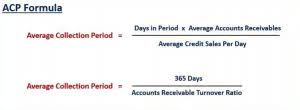
Think of a journal entry as the Snapchat of accounting—capturing a moment in your business’s financial life. It’s a record made to keep track of the various business transactions that occur. These entries are usually recorded in the company’s general ledger, which is like the grand archive of all your financial dealings. A journal entry records financial transactions that a business engages in throughout the accounting period. These entries are initially used to create ledgers and trial balances. Eventually, they are used to create a full set of financial statements of the company.

Mục lục
Cash Sales Journal Entry for Services Rendered

Determine the nature of the intercompany transaction, such as a sale of goods, provision of services, loan, or expense allocation. These examples help us understand GST journal entries with examples for both local and interstate dealings. GST (Goods and Services Tax) is a comprehensive, multi-stage, destination-based indirect tax levied on the supply of goods and services in India. It replaced multiple indirect taxes like VAT, service tax, and excise duty, aiming to simplify the tax structure. GST is collected at every stage of the supply chain, with credits available for tax paid on previous stages, ensuring transparency and eliminating the cascading effect of taxes.
Sales Credit Journal Entry
- Tally automatically applies these ledgers if GST is enabled.
- To create a journal entry in your general ledger or for a sale, take the following steps.
- Beyond sales, managing your inventory effectively requires understanding opening and closing stock journal entries.
- The transaction will decrease cash $500 and decrease sale tax payable $ 500.
- Mess it up, and you might find yourself scratching your head come tax season—or worse, under the watchful eye of auditors.
The sales journal (also known as the sales book or sales day book) is a special journal used to record all credit sales. Every transaction that is entered in this journal essentially results in a debit to the accounts receivable account and a credit how is sales tax calculated to the sales account. Cash sales are not recorded in the sales journal; rather, they are recorded in another special journal known as the cash receipts journal. The sales entry should be updated or reversed when a customer returns an item or receives an allowance.
Journal Entry for Allowance for Doubtful Accounts:
- The company is also required to record inventory and remove cost of goods sold.
- When purchasing a fixed asset on credit, the appropriate asset account will be debited, and the account payable will be credited.
- After discussing typical mistakes, let’s examine how journal entries for credit sales impact your financial accounts.
- In accounting speak, these sales aren’t just floating in the ether.
Your revenue and accounts receivable may be distorted if returns or allowances are not appropriately recorded, which could result in inaccurate financial records. Listen up, future financial wizards and entrepreneurial trailblazers! Today, we’re diving into the thrilling (yes, thrilling) world of the credit sales journal entry. Think of it as the secret handshake of accounting—master it, and you’ll unlock the door to savvy business management without breaking a sweat.

Sales revenue: debit or credit?

And, you will credit your Sales Tax Payable and Revenue accounts. HubiFi offers automated solutions designed to simplify and streamline your revenue recognition process. We integrate with your existing accounting software, ERPs, and CRMs to seamlessly capture sales data and automatically generate accurate journal entries. This eliminates manual data entry, reducing errors and ensuring compliance with ASC 606 and other relevant accounting standards. We’ve helped companies automate their revenue recognition for complex scenarios, improving accuracy and efficiency. For a deeper look at how HubiFi can transform your revenue recognition process, explore our automated solutions or schedule a demo.
- The business enterprise benefits, in many ways, by bypassing journal entries.
- We use a unique type of voucher called Credit Note in Tally to record sales returns.
- This portion belongs to the government, and it should not include in our profit and loss statement.
- Suppose your company, located in Maharashtra, sells goods worth Rs. 15,000 with a GST rate of 18% to Business B, in Delhi.
- For more detail on managing sales and purchase returns and their impact on your financial statements, take a look at this resource.
- The seller also prepares a duplicate copy of each invoice he sends out to his buyer.
Example #6 – Journal Entries for Transactions
- A sales journal entry is the same as a revenue journal entry.
- Provisions journal entry is passed to show the amount set aside by the firm to meet contingencies.
- These journal entries are a necessary step in the accounting process, and each provides an equal debit and credit to a separate account for every transaction.
- The golden rule here is that for every debit, there’s an equal and opposite credit.
- Terms like “2/10, n/30” mean a 2% discount is applied if payment is made within 10 days, while the full amount is due within 30 days.
- These entries then post to ledgers, summarizing account activity.
- The next step is to learn how to accurately record these transactions, which is essential for keeping precise accounting records.
Accurately recording these transactions is crucial for understanding your business’s financial health. Sales revenue journal entries Remote Bookkeeping play a critical role in shaping your financial statements. They directly impact both your income statement and balance sheet. Your income statement uses this data to show your earned income, giving you a clear picture of your profitability. At the same time, these entries affect your balance sheet by changing your cash or accounts receivable and equity balances. This interplay between the two statements provides a comprehensive view of your financial position.

So, not even little sales of ₹100 should be accounted as proper sales good for cash journal entry. This is where HashMicro Accounting Software can make a difference. Designed to simplify complex financial processes, it helps businesses maintain seamless records, track receivables, and generate accurate reports with minimal effort. Here is an additional list of the most common business transactions and the journal entry examples to go with them. Purchasing process involves a number of steps starting from placing an order and ending with the delivery of goods. Apart from the cost incurred what is a sales journal in purchasing the goods, any additional expenses like Carriage, Import Duty, etc is also paid.